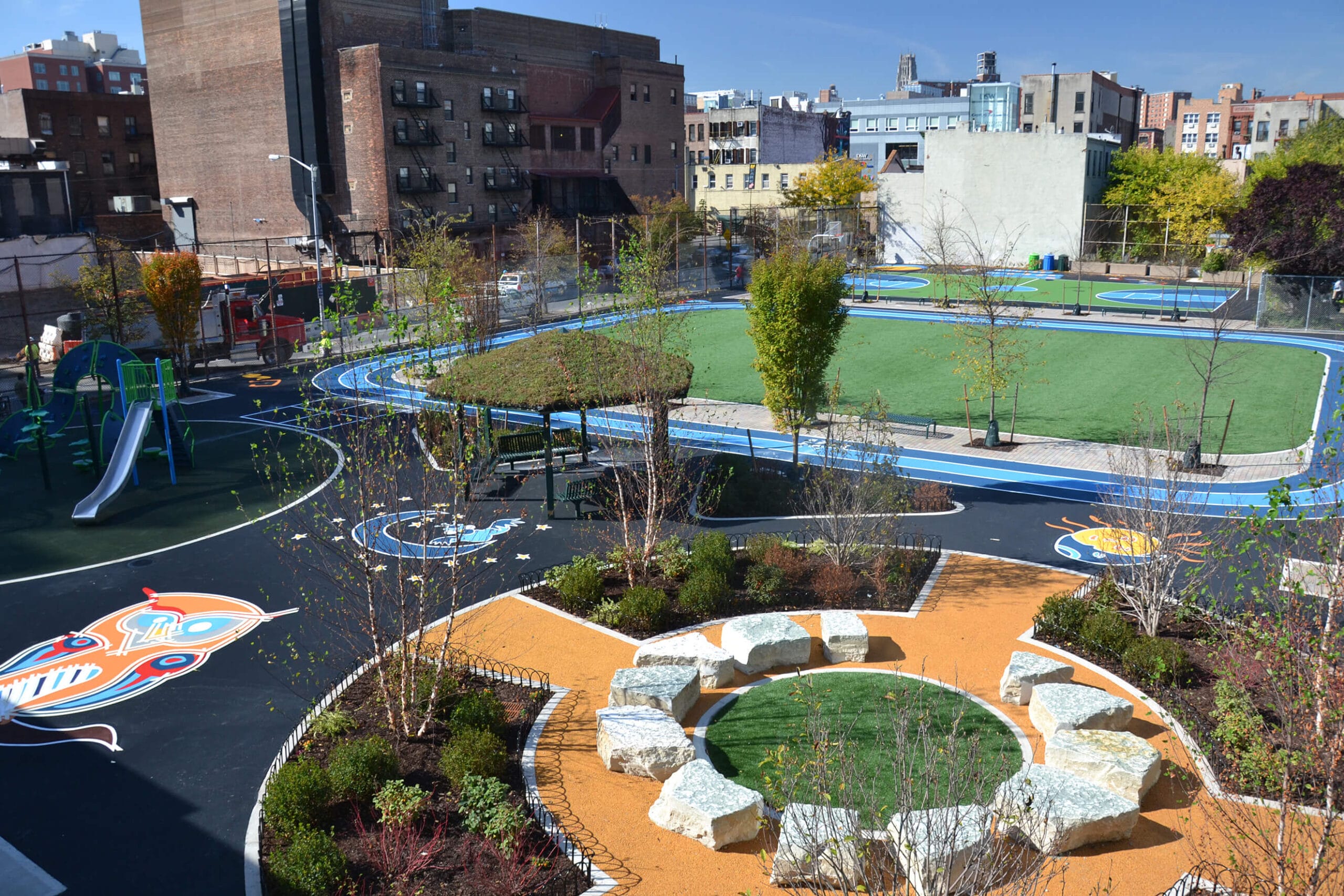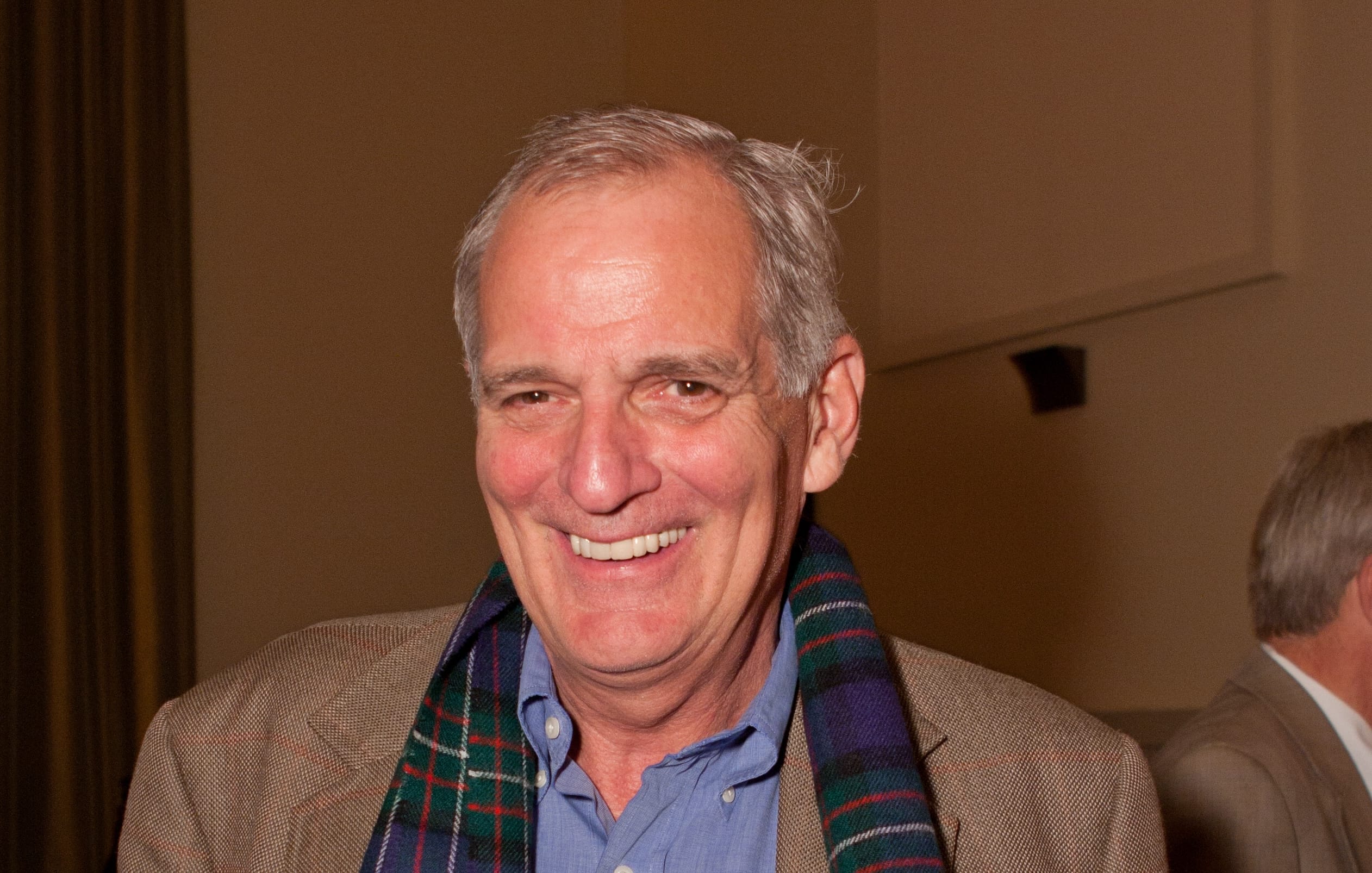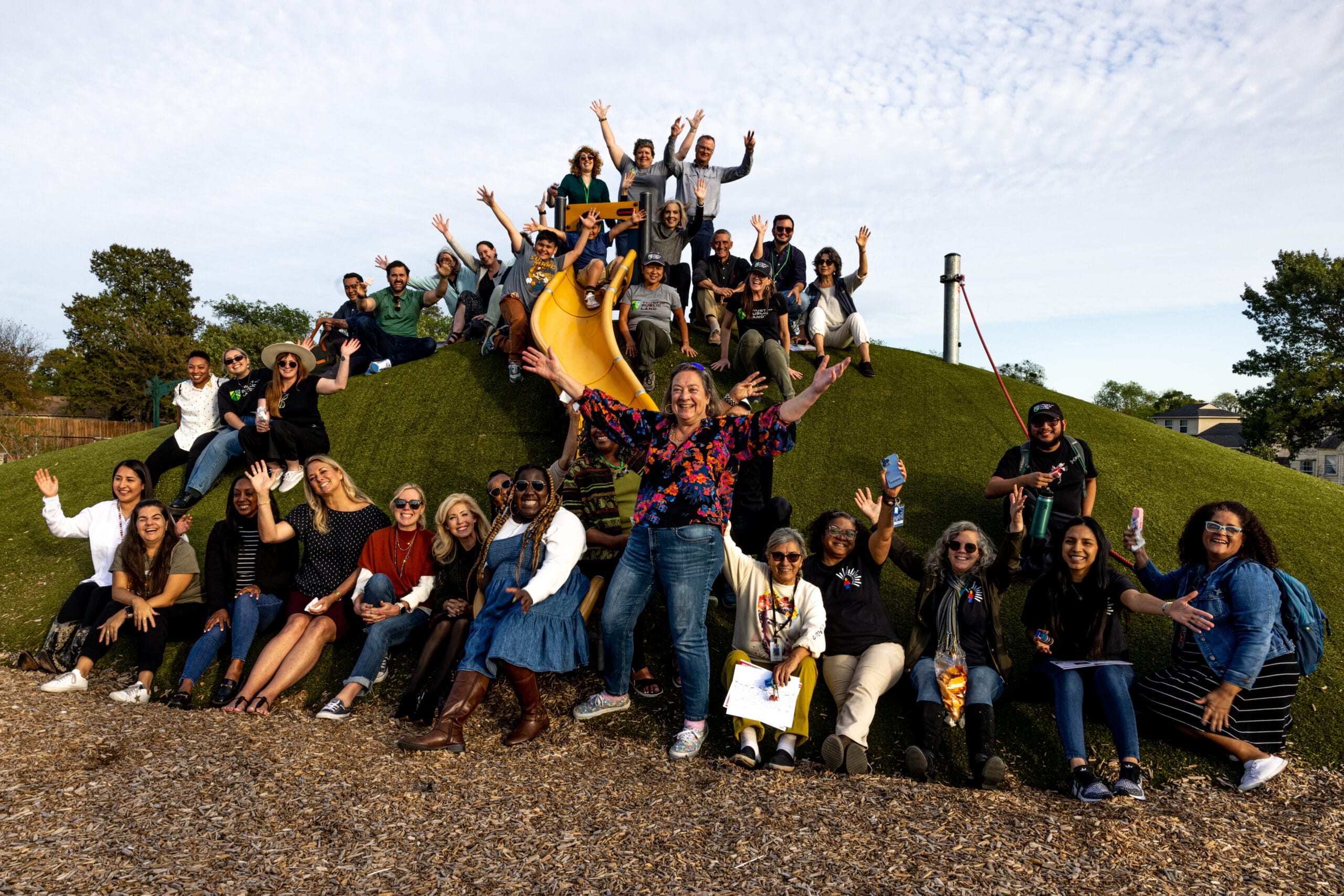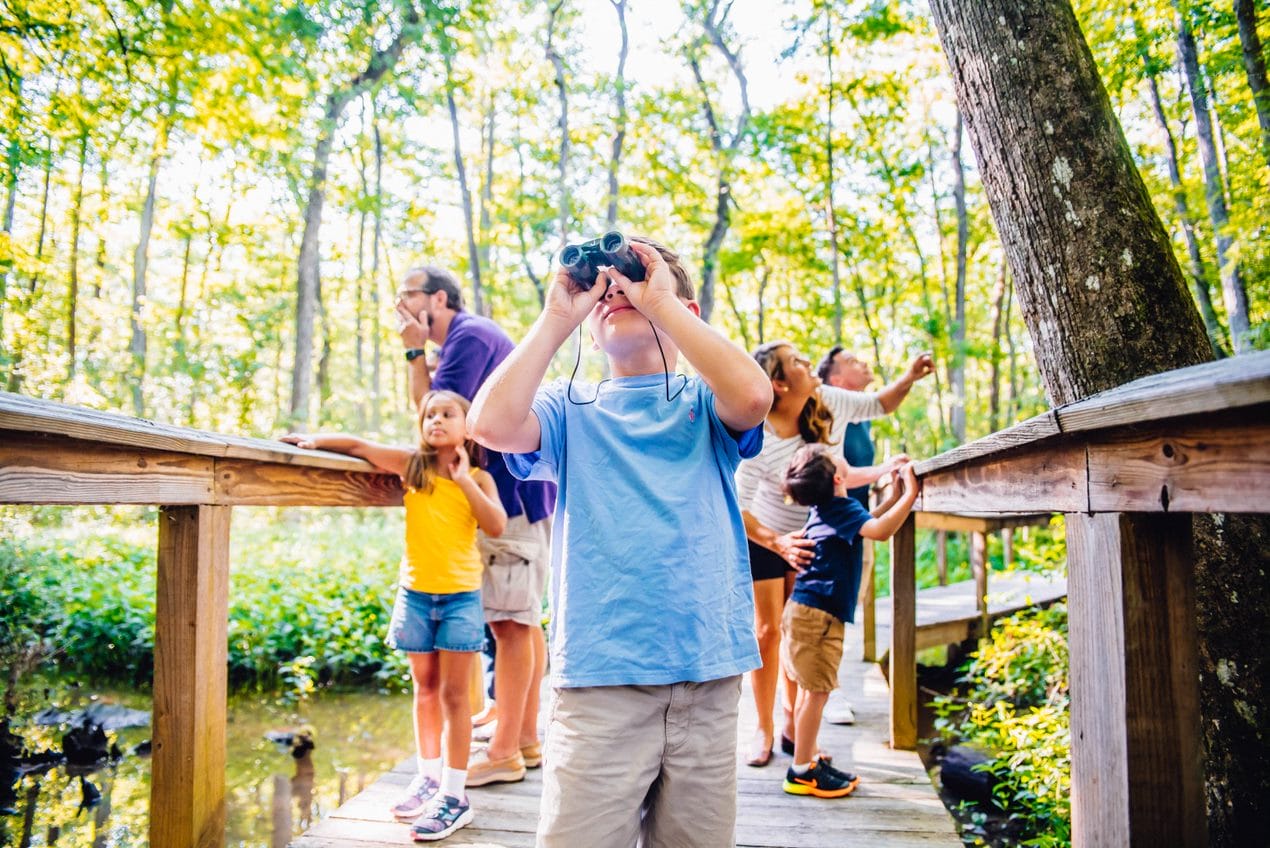
Are you getting your daily dose of Vitamin N?
Are you getting your daily dose of Vitamin N?
A decade ago, Richard Louv’s book Last Child in the Woods sounded the alarm: our culture's increasing alienation from the natural world is taking a toll on our kids. In the wake of the book's success, Louv co-founded the Children & Nature Network—and this month, Louv released his third book, Vitamin N: The Essential Guide to a Nature-Rich Life.
Adrian Benepe, director of city park development for The Trust for Public Land, sat down with Richard to talk about Vitamin N, the progress we’ve made, and how young and old alike can benefit from spending a lot more time outside.
Adrian: Congratulations on your new book! Tell us about it.
Richard: Vitamin N builds on my two previous books and the work we’re doing with the Children & Nature Network. Last Child in the Woods was about children and families, and The Nature Principle was geared toward adults—to offer a vision of what society would look like if we were as immersed in nature as we are in technology.
Both of those books helped to raise awareness. But I didn’t want to watch that awareness fade because people were confused about how to take action. That’s the primary reason I wrote Vitamin N. It’s a utilitarian book: it offers hundreds of specific, practical actions you can take to get more nature in your life, whoever and wherever you are.
Adrian: What do you mean by "nature-deficit disorder"?
Richard: Nature-deficit disorder is not an official medical diagnosis—at least not yet. Rather, it’s a condition of the society that we live in. We are increasingly alienated from the natural world. At the same time, we're seeing greater rates of child obesity, attention-deficit disorder, and depression. I've used nature-deficit disorder as a metaphor to start the conversation about how important nature is for our kids’ health, well-being, and cognitive function.
Exposure to nature is also important for maintaining a sound conservation ethic. Studies show that people who grow up to be conservationists had some kind of transcendent experience in nature as a kid. What happens if that disappears for future generations?
Adrian: Without that visceral motivation to protect what they love, who will grow up to be the park rangers, the wildlife biologists, the farmers, the landscape architects, or the innovators for sustainability?
Richard: Right. And we don't just risk losing competency for what we typically think of as "green jobs". The natural world has so much to teach us about other aspects of life.
For example, I'm friends with a family of farmers who live in a remote valley in New Mexico, in an adobe house, with no computers or television. When their son was little, he spent hours wandering along the Pecos River, exploring the chili fields and taking care of farm animals. Now he’s all grown up and the head of a big tech company. And even though he doesn't work directly in nature, he credits his current career success to those early experiences: he'll tell you that all that time he spent in nature taught him to identify patterns and to think systematically.
Adrian: Meanwhile, the average American teenager spends something like seven hours a day looking at a screen. What advice do you have for parents who are struggling to balance their child's screen time with time in nature?
Richard: This is a really tough issue. On one hand, humans have always used technology to engage with nature: map and compass, hiking boots, whatever. And there are some tech tools—like bird identification apps, camera phones, or GPS devices for geocaching—that can help your family bridge the divide between virtual and natural.
But here's a litmus test for those who want to use technology to engage more deeply with the outside world: how long does it take before you or your kid look away from the screen? If you’re looking at the screen for more than a few seconds at a time, I’d say that’s an inappropriate use of technology in nature.
Don't forget that Steve Jobs never played with a computer growing up. He was good at calligraphy and cabinetry. In fact, many leaders in the tech sector maintain strict screen time rules in their households. I wish that tech CEOs would talk more openly about this issue. We could use their leadership in the new nature movement.
Adrian: When you and I were kids, playing outside was a huge part of most people's childhoods. No one needed advice or guidance on going outside—it was just common sense. What happened? Why do we need a book of tips for parents to help their kids understand how to play in nature?
Richard: In most neighborhoods, the days of telling your kids to go outside and play until the streetlights come on are long gone—and they're not likely to come back. Today, many parents worry about "stranger danger," as well as physical risks, like climbing trees. But we forget that small physical risks in nature mature into benefits later in life. They prepare kids to handle more serious risks and challenges as they age.
Still, times have changed, and we need to meet today's parents where they are. So there’s a paradox: to give today's kids an unorganized experience in nature, we have to organize it. A great way to do this, which I describe in Vitamin N, is to create a Family Nature Club in your neighborhood. Gather a bunch of families together in a park at a set time. The kids can play together, building a fort or exploring a stream. The parents know where the kids are and what they’re up to, but can hang out on the sidelines and step in only when necessary.
This helps ease the fear factor, because we perceive safety in numbers. It's also an activity that any family can do for free—whether they're in an urban, suburban, or rural area. The Children & Nature network offers a free downloadable toolkit with instructions for how to start your own club.
Adrian: You mentioned parents “hanging out on the sidelines”. Do you have thoughts on how hands-on or hands-off educators or caregivers should be when kids are playing outside?
Richard: We know that independent, make-believe play outdoors helps kids develop executive function. In Vitamin N, I talk about the concept of the “hummingbird parent." It's a theory I borrowed from a mother I met who realized that while she didn’t want to be a so-called "helicopter parent," hovering over her kid all the time, she wasn’t quite ready to back away completely. So she coined the idea of the hummingbird parent—watching from a window while her kids are at the far end of the yard or hanging back while they explore in the first trees of the forest. Like a hummingbird, she remains at a distance and only swoops in when she perceives danger. I think that’s pretty wise.
Adrian: Do you find that wilder landscapes offer more of nature’s benefits than places like neighborhood parks?
Richard: We would benefit by defining nature more broadly. Nature is not just confined to the wilderness. In Vitamin N, I offer tips for creating nature-rich cities, nature-rich schools, homes, gardens, and neighborhoods. We need yards filled with native plants that begin to bring back bird and butterfly migration routes. We should work to turn the places we live, work, learn, and play into places rich in nature. I think that’s a beautiful vision of our future on this planet that we can work towards. If we succeed, we will have a profound impact, not only on biodiversity and the long-term health of our planet, but on our own health and well-being.
Where does your family go for its daily dose of vitamin N? Let us know in the comments, or join us on Facebook!
One-third of Americans, including 28 million children, lack safe, easy access to a park within a 10-minute walk of home. Urge your senators to allocate funding to create parks and enhance outdoor recreational opportunities by championing the Outdoors for All Act today!


Donate to become a member, and you’ll receive a subscription to Land&People magazine, our biannual publication featuring exclusive, inspiring stories about our work connecting everyone to the outdoors.
See how our supporters are helping us connect people to the outdoors across the country.











